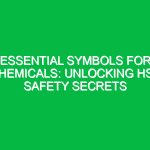Introduction
Hello team, and welcome to today’s Toolbox Talk. We’re going to discuss a crucial issue that affects not only our Safety but also the Safety of our colleagues, loved ones, and the community at large: Drunk Driving. This talk aims to provide you with essential insights about how drunk driving impacts our work Environment, the risks involved, and the measures we can take to prevent it. By the end of this session, I hope you will have a better understanding of why it’s vital to stay sober behind the wheel and how we can collectively foster a safer workplace.
The Impact of Drunk Driving on Safety
Drunk driving is often viewed as a personal choice, but its ramifications extend far beyond the individual. It is a leading cause of accidents, injuries, and fatalities on the road. According to the National Highway Traffic Safety Administration (NHTSA), each year, thousands of lives are lost due to drunk driving incidents. In our health, safety, and environmental (HSE) context, the implications of drunk driving are significant:
- Increased Risk of Accidents: Operating a vehicle under the influence impairs judgment, coordination, and reaction time, leading to a greater likelihood of accidents.
- Legal Consequences: Employees caught driving under the influence can face severe legal repercussions, including fines, license suspension, and even imprisonment.
- Insurance Issues: Drunk driving can lead to higher insurance premiums or even loss of coverage, affecting not just the individual but possibly the company as well.
- Reputational Damage: Companies associated with employees who engage in drunk driving can face reputational harm, affecting business relationships and client trust.
Understanding the Risks of Drunk Driving
To fully grasp the seriousness of the issue, let’s break down the specific risks associated with drunk driving:
- Physical Impairment: Alcohol affects motor skills and cognitive function. Even a small amount can impair your ability to operate machinery safely, whether it’s a vehicle or construction equipment.
- Emotional and Social Factors: Alcohol consumption can lead to poor decision-making. Social pressures, such as those from peers or work culture, can exacerbate the situation.
- Environmental Hazards: Drunk driving not only endangers the driver but also puts others at risk, including pedestrians, cyclists, and other motorists on the road.
Real-Life Examples
Consider a scenario where an employee decides to drive home after consuming alcohol at a company event. They may feel fine initially, but as they drive, their impaired judgment leads to a collision with another vehicle. The consequences of this decision ripple outwards: injuries to others, potential loss of life, legal battles, and a tarnished company image.
Another example occurred in a construction company where an employee returned to work under the influence after a lunch break. They operated heavy machinery, leading to a serious workplace accident that resulted in injuries to several coworkers. This incident not only affected those directly involved but also disrupted the entire project and led to investigations, fines, and increased insurance costs.
Best Practices for Preventing Drunk Driving
So, what can we do as a team to prevent drunk driving and ensure a safe working environment? Here are some Best Practices:
- Education and Awareness: Regularly participate in Toolbox Talks like this one to stay informed about the dangers of drunk driving.
- Designated Drivers: Always arrange for a sober driver if you plan to consume alcohol during work-related events. Consider using ride-sharing services.
- Open Communication: Feel empowered to speak up if you notice someone is about to drive under the influence. It’s crucial to look out for one another.
- Implement Company Policies: Familiarize yourself with your company’s policies on alcohol consumption and driving. Ensure compliance to avoid risks.
Legal Regulations and Company Policies
Understanding the legal landscape surrounding drunk driving is vital. In most jurisdictions, driving under the influence is a criminal offense, leading to serious penalties. Companies often have strict policies regarding alcohol consumption during work hours and at company-sponsored events. Violating these can lead to disciplinary actions, including termination.
Additionally, different industries may have specific regulations governing the Operation of vehicles and machinery. For example, commercial drivers face even stricter regulations regarding blood alcohol concentration (BAC) limits. Ensure you are aware of and comply with these Standards to maintain both personal and organizational safety.
Encouraging Safe Behavior
As a team, it’s our responsibility to foster a culture of safety. Encourage each other to make wise choices, especially regarding alcohol consumption and driving. Here are some questions to consider:
- How can we support one another in making safe choices about transportation after social events?
- What strategies can we implement to raise awareness about the risks associated with drunk driving?
- Are there any changes we can suggest to our company policies that would enhance safety regarding alcohol consumption?
Conclusion
In conclusion, drunk driving is more than just a personal issue; it has far-reaching implications for our safety, our colleagues, and our organization. By understanding the risks and implementing Best Practices, we can create a safer work environment. Remember, it’s okay to speak up and intervene if you see someone about to drive under the influence. Your actions could save lives.
Thank you for your attention and commitment to safety. Let’s work together to ensure that we all make responsible choices and protect ourselves and others from the dangers of drunk driving.


